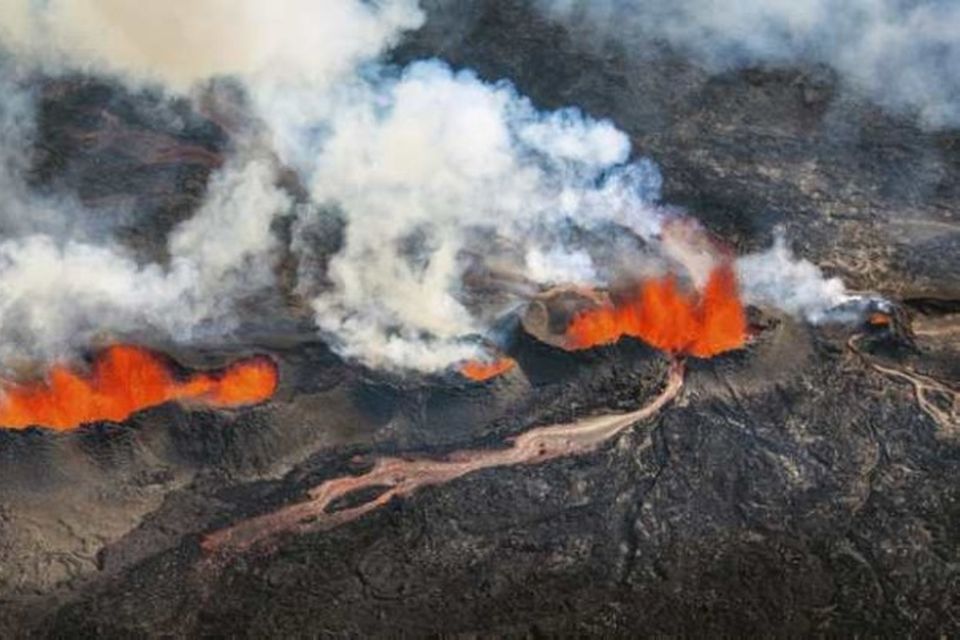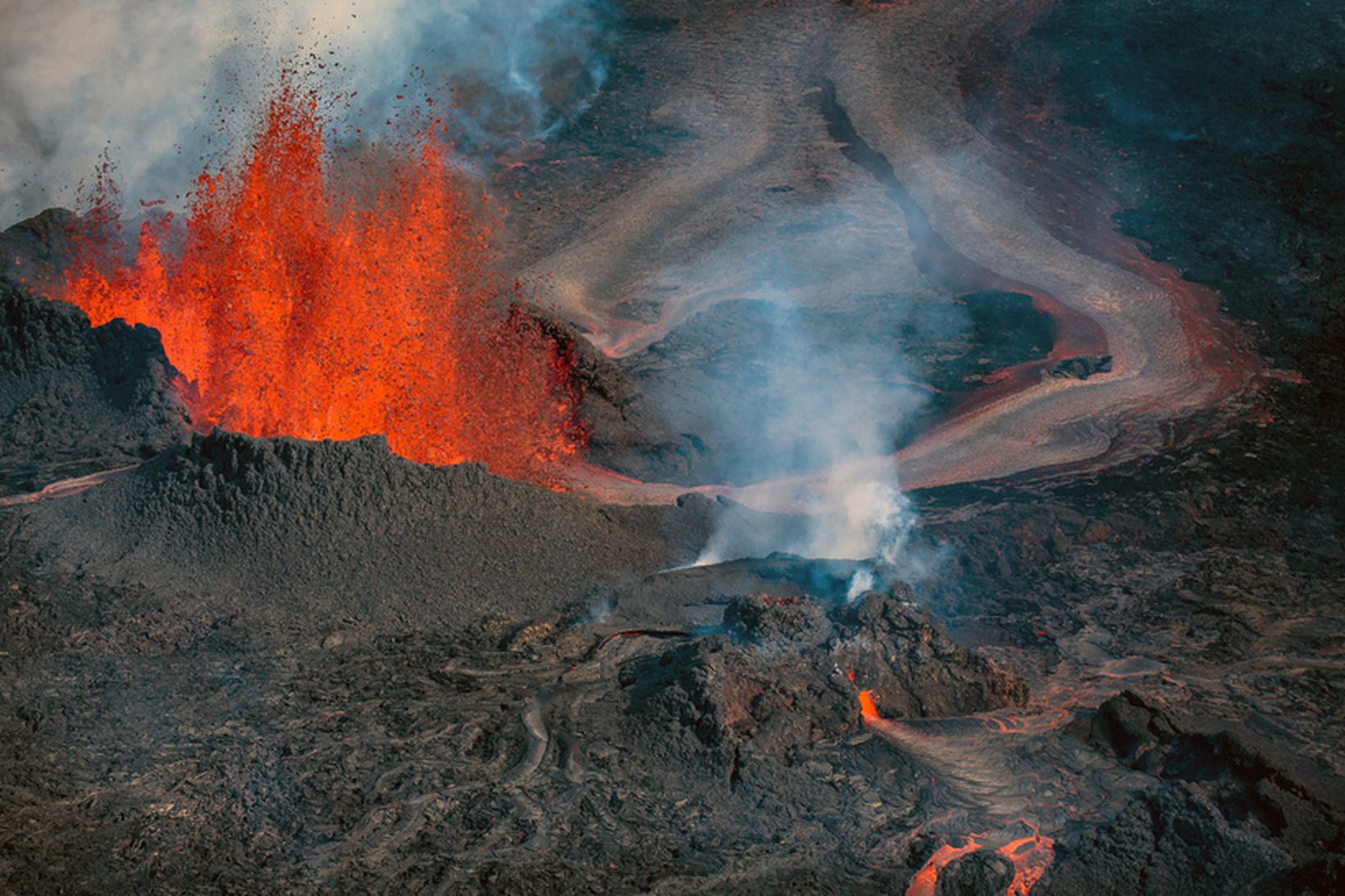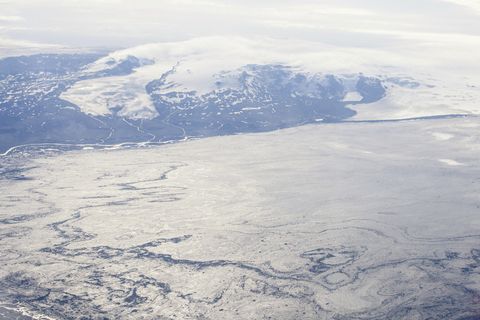A new rift closer to Dyngjujökull

Mynd 1 af 30
Gos í Holuhrauni
Árni Sæberg
Mynd 2 af 30
Gos í Holuhrauni
Árni Sæberg
Mynd 3 af 30
Gos í Holuhrauni
Árni Sæberg
Mynd 4 af 30
Gos í Holuhrauni
Árni Sæberg
Mynd 5 af 30
Gos í Holuhrauni
Árni Sæberg
Mynd 6 af 30
Gos í Holuhrauni
Árni Sæberg
Mynd 7 af 30
Gos í Holuhrauni
Árni Sæberg
Mynd 8 af 30
Gos í Holuhrauni
Árni Sæberg
Mynd 9 af 30
Gos í Holuhrauni
Árni Sæberg
Mynd 10 af 30
Gos í Holuhrauni
Árni Sæberg
Mynd 11 af 30
Gos í Holuhrauni
Árni Sæberg
Mynd 12 af 30
Gos í Holuhrauni
Árni Sæberg
Mynd 13 af 30
Gos í Holuhrauni
Árni Sæberg
Mynd 14 af 30
Gos í Holuhrauni
Árni Sæberg
Mynd 15 af 30
Gos í Holuhrauni
Árni Sæberg
Mynd 16 af 30
Gos í Holuhrauni
Árni Sæberg
Mynd 17 af 30
Gos í Holuhrauni
Árni Sæberg
Mynd 18 af 30
Gos í Holuhrauni
Árni Sæberg
Mynd 19 af 30
Gos í Holuhrauni
Árni Sæberg
Mynd 20 af 30
Gos í Holuhrauni
Árni Sæberg
Mynd 21 af 30
Gos í Holuhrauni
Árni Sæberg
Mynd 22 af 30
Gos í Holuhrauni
Árni Sæberg
Mynd 23 af 30
Gos í Holuhrauni
Árni Sæberg
Mynd 24 af 30
Gos í Holuhrauni
Árni Sæberg
Mynd 25 af 30
Gos í Holuhrauni
Árni Sæberg
Mynd 26 af 30
Gos í Holuhrauni
Árni Sæberg
Mynd 27 af 30
Gos í Holuhrauni
Árni Sæberg
Mynd 28 af 30
Gos í Holuhrauni
Árni Sæberg
Mynd 29 af 30
Gos í Holuhrauni
Árni Sæberg
Mynd 30 af 30
Gos í Holuhrauni
Árni Sæberg
The original fissure is more powerful than the new one.
mbl.is/Árni Sæberg
At about 7:00 UTC this morning reports came in that new eruptive fissures had opened to the south of the on-going eruption.
At 8:30, a surveillance flight with scientists from the IMO and University of Iceland observed the following:
- Two new eruptive fissures formed south of the previous eruption site in Holuhraun, in a graben, that had formed above the intrusion, about 2km away from Dyngjujökull.
- The eruptive fire fountains from the new fissures are substantially smaller than in the older fissure. Steam and gas rises in a south eastern direction from the fissure.
- The cauldron in Dyngjujökull seems to have grown deeper since the last observation.
- No changes are visible in Bárðarbunga.
- Substantial amounts of SO2 are still being released to the atmosphere in association with the eruption.
- Conductivity measurements show a slight increase in conductivity in Jökulsá á Fjöllum, indication more waterflow.
- Some tremor was detected on seismometers shortly after 3:00 UTC last night. It decreased at about 6:00 UTC this morning.
- Considerable activity is in the northern fissure (fissure 1) and the height of the steam cloud is about 15,000 feet.
There are no indications of the eruption in Holuhraun being in decline. The lava from fissure 1 continues to flow to the east north east and has grown in area since yesterday.
- Seismicity in the area is similar to yesterday’s activity. About 170 earthquakes were detected since midnight. Two earthquakes of magnitudes 4,4 and 5,3 were detected in the Bárðarbunga caldera region at around midnight UTC.
- GPS displacements have continues to decrease and are now within uncertainty limits.
- Four scenarios are still likely:
- The migration of magma could stop, resulting in a gradual reduction in seismic activity and no further eruptions.
- The dike could reach the Earth’s surface at different locations outside the glacier. Lava flow and/or explosive activity cannot be excluded.
- The intrusion reaches the surface and another eruption occurs where either the fissure is partly or entirely beneath Dyngjujökull. This would most likely produce a flood in Jökulsá á Fjöllum and perhaps explosive, ash-producing activity.
- An eruption in Bárðarbunga. The eruption could cause an outburst flood and possibly an explosive, ash-producing activity. In the event of a subglacial eruption, it is most likely that flooding would affect Jökulsá á Fjöllum. However it is not possible to exclude the following flood paths: Skjálfandafljót, Kaldakvísl, Skaftá and Grímsvötn.
Other scenarios cannot be ruled out.
From the Icelandic Met Office:
The Aviation Colour Code for Bárðarbunga remains at ‘orange’ and the code for Askja at ‘yellow’.
- Evacuations in Neskaupstaður and Seyðisfjörður
- "This is my little sister"
- Icelandair and Southwest Airlines Announce Partnership
- Bus overturns in Hellisheiði
- Power outages in the Eastfjords
- No reports of avalanches in the east
- Tómasdóttir sends Trump best wishes
- Ran to the scene with a fire extinguisher in hand
- Two American children found in Iceland
- Never before have there been more Icelandic-farmed fish
- Evacuations in Neskaupstaður and Seyðisfjörður
- Icelandair and Southwest Airlines Announce Partnership
- Bus overturns in Hellisheiði
- "This is my little sister"
- Travelers advised to check conditions
- Never before have there been more Icelandic-farmed fish
- Two American children found in Iceland
- It might have been better to listen to the residents
- Start preparations for strikes
- Wanted Iceland's control over Greenland
- It might have been better to listen to the residents
- Large number of dead geese found in Reykjavik: “Very scary”
- Wanted Iceland's control over Greenland
- Tourists rescued from car roofs
- Two American children found in Iceland
- Grímsvötn lakes flash flood has begun
- Powerful earthquake swarm in Bárðarbunga
- "Something horrible has happened"
- Icelandair and Southwest Airlines Announce Partnership
- Never before have there been more Icelandic-farmed fish
Iceland Monitor — Fleiri fréttir
Í dag
Í gær
Laugardaginn 18. janúar
Föstudaginn 17. janúar
Fimmtudaginn 16. janúar
Miðvikudaginn 15. janúar
Þriðjudaginn 14. janúar
Mánudaginn 13. janúar
Sunnudaginn 12. janúar
Laugardaginn 11. janúar
Föstudaginn 10. janúar
Fimmtudaginn 9. janúar
Miðvikudaginn 8. janúar
Þriðjudaginn 7. janúar
Mánudaginn 6. janúar
Laugardaginn 4. janúar
Föstudaginn 3. janúar
Fimmtudaginn 2. janúar
Miðvikudaginn 1. janúar
6:24
Happy New Year 2025!
Þriðjudaginn 31. desember
Mánudaginn 30. desember
14:27
Bárðarbunga is shaking
Sunnudaginn 29. desember
Laugardaginn 28. desember
- Evacuations in Neskaupstaður and Seyðisfjörður
- "This is my little sister"
- Icelandair and Southwest Airlines Announce Partnership
- Bus overturns in Hellisheiði
- Power outages in the Eastfjords
- No reports of avalanches in the east
- Tómasdóttir sends Trump best wishes
- Ran to the scene with a fire extinguisher in hand
- Two American children found in Iceland
- Never before have there been more Icelandic-farmed fish
- Evacuations in Neskaupstaður and Seyðisfjörður
- Icelandair and Southwest Airlines Announce Partnership
- Bus overturns in Hellisheiði
- "This is my little sister"
- Travelers advised to check conditions
- Never before have there been more Icelandic-farmed fish
- Two American children found in Iceland
- It might have been better to listen to the residents
- Start preparations for strikes
- Wanted Iceland's control over Greenland
- It might have been better to listen to the residents
- Large number of dead geese found in Reykjavik: “Very scary”
- Wanted Iceland's control over Greenland
- Tourists rescued from car roofs
- Two American children found in Iceland
- Grímsvötn lakes flash flood has begun
- Powerful earthquake swarm in Bárðarbunga
- "Something horrible has happened"
- Icelandair and Southwest Airlines Announce Partnership
- Never before have there been more Icelandic-farmed fish



































